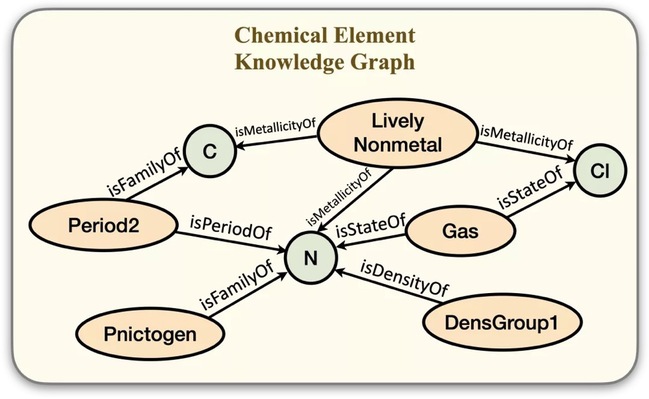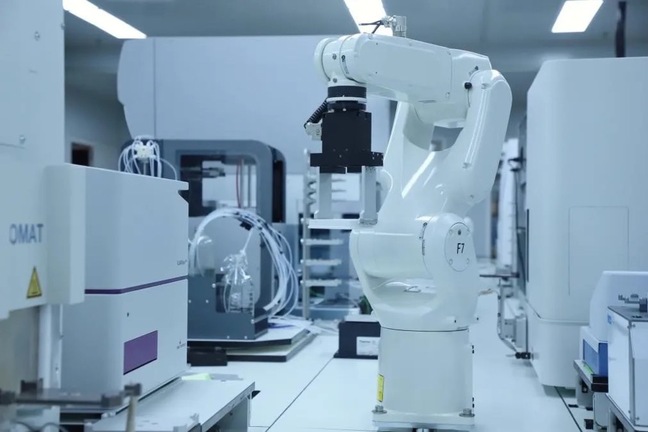What will happen when the Periodic Table of Chemical Elements meets AI model?
“Molecular Contrastive Learning with Chemical Element Knowledge Graph”, the latest research achievement by Dr. Zhang Qiang, Qiushi Sci-tech Scholar (among the Global Recruitment Program of 100 Talents) and his team of ZJU-Hangzhou Global Scientific and Technological Innovation Center has brought us imagination.
In this innovative achievement, first the Periodic Table of Chemical Elements was constructed into Chemical Element Knowledge Graph and then the Graph was incorporated into AI model to build a new AI framework for Knowledge-enhanced Molecular Contrastive Learning, which is expected to be widely applied in biomolecular research and compound synthesis research, e.g. the prediction of toxicity properties of compound molecules.
Currently, the research has been accepted by AAAI2022, a top international AI conference, from nearly 10,000 submissions worldwide, with Dr. Fang Yin and Dr. Zhang Qiang as the first authors and Prof. Chen Huajun as the corresponding author.

Molecular Contrastive Learning with Chemical Element Knowledge Graph
Knowledge Graph aims to describe the concepts, entities, and events in the objective world and their relationships. In the Knowledge Graph, “Entity” is used to express the nodes in the Graph and “Relation” to express the “edges” in the graph. Entities refer to the objects in the real world, such as persons, institutions, chemical elements, genes, proteins, while relationships to express the connections between entities, such as a person-“lives in”-Beijing, Zhang San and Li Si are “friends”. Knowledge graphs are applied extensively in search engines, intelligent question and answer, recommendation computing, language understanding, big data analysis, device IoT, and other fields.

Contrastive Learning on Graph, put it simply, is a self-supervised learning algorithm for graph data. For a given large amount of unlabeled graph data, the graph contrastive learning algorithm, instead of designing a complex pre-training task, only aims to train an encoder, the graphs encoded from which are vectors, so the properties of the graph data can be preserved.
In recent years, Learning on Molecular Graphs has come to be applied to several downstream tasks in biology, chemistry, and pharmaceuticals, such as molecular property prediction and drug designs, with unlimited prospects. However, previous studies failed to incorporate domain scientific knowledge into Learning on Molecular Graphs, ignoring the microscopic connections between domain knowledge and atoms embedded in molecular graphs.

Chemical Element Knowledge Graph establishes the relationships between atoms that are not connected by chemical bonds but have related chemical properties
To address this problem, Dr. Zhang Qiang, under the guidance of Prof. Chen Huajun from College of Computer Science and Technology of Zhejiang University, led his members to conduct interdisciplinary research by constructing Chemical Element Knowledge Graph based on the integration of AI models and the Periodic Table of Chemical Elements, which describes the microscopic connections between elements and the domain scientific knowledge related to each element. In addition, a new Knowledge-enhanced Contrastive Learning (KCL) framework for molecular graphs was proposed.

Knowledge-enhanced Contrastive Learning (KCL) framework
This new Knowledge-enhanced Contrastive Learning (KCL) framework for molecular graphs consists of three modules: Knowledge-enhanced graph module, knowledge-aware graph representation module, and contrastive learning target module. The knowledge-enhanced graph module expands the original molecular graphs based on knowledge graph (KG) with chemical elements. The knowledge-aware graph representation module extracts molecular representations from the original molecular graph using a generic graph encoder, and encodes complex information in the enhanced molecular graph using the Knowledge-aware Message Passing Neural Network (KMPNN). The contrast learning target module constructs a contrast loss function by maximizing the consistency between positive sample pairs and the variability between Hard negative pairs (HNPs) to optimize the model.
The research of the team also explained what Knowledge-enhanced Contrastive Learning (KCL) learns from atoms and attributes in the augmented molecular graph through a large number of visualization experiments in multiple real-world scenarios, thus demonstrating that KCL achieves better performance than the advanced baseline on eight molecular datasets.
Experiencing Infinite Interdisciplinary Possibilities at the Center
Dr. Zhang Qiang, Qiushi Sci-tech Scholar (among the Global Recruitment Program of 100 Talents), got his Ph.D degree from University College London (UK), and his research covers machine learning, data mining, natural language processing and biomolecular intelligence, etc. He has participated in several major research projects funded by the Engineering and Physical Sciences Research Council (EPSRC), the UK and companies such as Google and has published a number of papers in NeurIPS, ICML, AAAI, WWW, TOIS, top academic conferences and SCI journals on artificial intelligence.

As a young scholar with rich experience in research and industrial projects, Zhang Qiang were favored by several top Internet organizations when he returned to China, but he chose ZJU-Hangzhou Global Scientific and Technological Innovation Center after careful consideration.
“Because I see more possibilities at the Center, I am very much looking forward to AI for Science, and also hope to see the paradigm shift, Science for AI, which will be innovative and meaningful.” The Research Institute of Biological and Molecular Smart Manufacturing at the Center where Dr. Zhang Qiang is working is in great need of AI-related knowledge at promoting research in biological and molecular smart manufacturing with high-throughput technologies.

Zhang Qiang said, as an expert in computer science and technology, he had never thought he would be so closely related to biology and chemistry. Every day at the Center, he experiences great brainstorming when he meets young scholars from different fields, and sometimes there may be a new idea after a casual chat. He said, “Our research integrates the knowledge of computer science and technology, chemistry, biology and others, and the interdisciplinary research between knowledge graph and AI model can help us better predict the properties of molecules, so it can be widely applied in biomedical field with a wide range of scenarios.”
In an open and interdisciplinary landscape, Zhang Qiang hopes to meet more like-minded friends and colleagues to achieve more in scientific research at the Center in a cooperative manner and finally contribute young power to scientific innovation together!












